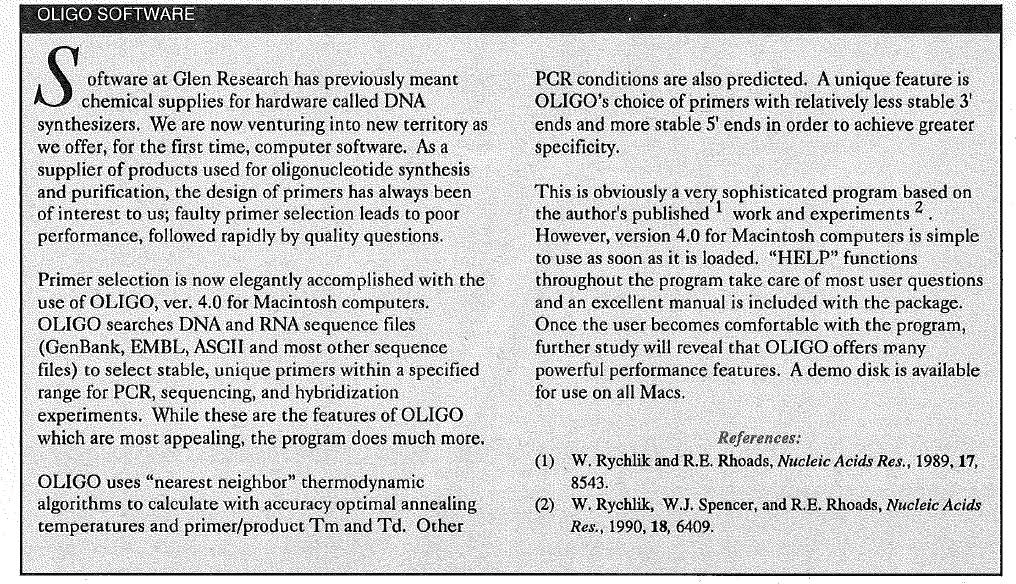Glen Report 5-16: Spacer Phosphoramidite
The need for fast and simple labelling of oligonucleotides has led to the development of CE phosphoramidite derivatives of the marker compounds, e.g., fluorescein and biotin. While convenient for automated synthesis, the introduction of these products has led to situations where the spacer arm included in the phosphoramidite is of insufficient length for a specific application. Some of the most popular applications include:
1) The development of diagnostic probes where the label is included at the 3'- or 5'-terminus.
2) The development of sequencing and diagnostic techniques based on biotin at the 5'-terminus of a primer prior to amplification. The derived biotinylated DNA is then trapped using streptavidin beads.
3) The development of potentid therapeutics containing labels which are also intercalating molecules.
The Spacer Phosphoramidite can be added once or in multiple additions between the oligonucleotide and the label during automated synthesis to form a 9 atom, or multiples thereof, mixed polarity spacer arm.
Another application1is found in the preparation of oligonucleotides containing a hairpin loop made of polyethylene glycol. Naturally occurring hairpin and cruciform structures are known to occur frequently in regions which function as regulation and promotion sites. Polyethylene glycol loops are chosen because of their good solubility due to the presence of ether linkages. The loop length can be varied by consecutive additions of Spacer Phosphoramidite.

Reference
(1) M. Durard, K. Chevrie, M. Chassignol, N.T. Thuong, and J.C. Maurizot, Nucleic Acids Res., 1990, 18, 6353. 2)
Product Information
Spacer Phosphoramidite 9 (10-1909)
The Oligo software is no longer offered,

- Glen Report 5-11: 2'-0Me-RNA -The Logical RNA Alternative?
- Glen Report 5-12: Psoralen C2 / Direct Fluorescein Labelling of Oligonucleotides
- Glen Report 5-13: BioTEG - The Ultimate Biotin Phosphoramidite
- Glen Report 5-14: Blocking the Termini of Oligonucleotides
- Glen Report 5-15: Thiol Modification of Oligonucleotides
- Glen Report 5-16: Spacer Phosphoramidite
- Glen Report 5-17: Unusual Monomers

